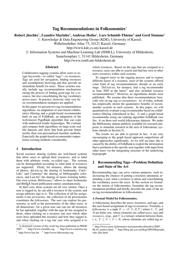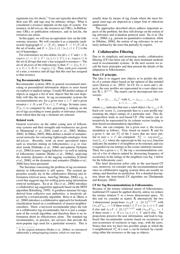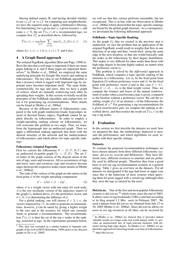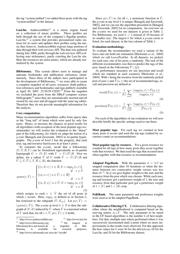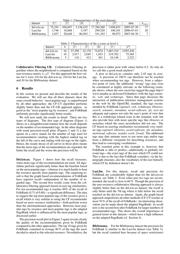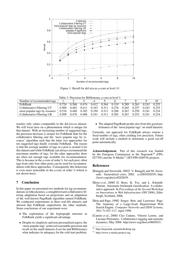Datasheet 搜索 > 音频放大器 > TI(德州仪器) > TAS5121IDKDE4 数据手册 > TAS5121IDKDE4 其他数据使用手册 1/8 页

 器件3D模型
器件3D模型¥ 35.197
TAS5121IDKDE4 其他数据使用手册 - TI(德州仪器)
制造商:
TI(德州仪器)
分类:
音频放大器
封装:
HSSOP-36
描述:
数字AMPLIIFIER功率级 DIGITAL AMPLIIFIER POWER STAGE
Pictures:
3D模型
符号图
焊盘图
引脚图
产品图
页面导航:
应用领域在P7
导航目录
TAS5121IDKDE4数据手册
Page:
of 8 Go
若手册格式错乱,请下载阅览PDF原文件

Tag Recommendations in Folksonomies
∗
Robert J
¨
aschke
1
, Leandro Marinho
2
, Andreas Hotho
1
, Lars Schmidt-Thieme
2
and Gerd Stumme
1
1: Knowledge & Data Engineering Group (KDE), University of Kassel,
Wilhelmsh
¨
oher Allee 73, 34121 Kassel, Germany
http://www.kde.cs.uni-kassel.de
2: Information Systems and Machine Learning Lab (ISMLL), University of Hildesheim,
Samelsonplatz 1, 31141 Hildesheim, Germany
http://www.ismll.uni-hildesheim.de
Abstract
Collaborative tagging systems allow users to as-
sign keywords—so called “tags”—to resources.
Tags are used for navigation, finding resources
and serendipitous browsing and thus provide an
immediate benefit for users. These systems usu-
ally include tag recommendation mechanisms
easing the process of finding good tags for a re-
source, but also consolidating the tag vocabulary
across users. In practice, however, only very ba-
sic recommendation strategies are applied.
In this paper we present two tag recommendation
algorithms: an adaptation of user-based collabo-
rative filtering and a graph-based recommender
built on top of FolkRank, an adaptation of the
well-known PageRank algorithm that can cope
with undirected triadic hyperedges. We evaluate
and compare both algorithms on large-scale real
life datasets and show that both provide better
results than non-personalized baseline methods.
Especially the graph-based recommender outper-
forms existing methods considerably.
1 Introduction
Social resource sharing systems are web-based systems
that allow users to upload their resources, and to label
them with arbitrary words, so-called tags. The systems
can be distinguished according to what kind of resources
are supported. Flickr, for instance, allows the sharing
of photos, del.icio.us the sharing of bookmarks, CiteU-
Like
1
and Connotea
2
the sharing of bibliographic refer-
ences, and Last.fm
3
the sharing of music listening habits.
Our own system, BibSonomy,
4
allows to share bookmarks
and BIBT
E
X based publication entries simultaneously.
In their core, these systems are all very similar. Once a
user is logged in, he can add a resource to the system, and
assign arbitrary tags to it. The collection of all his assign-
ments is his personomy, the collection of all personomies
constitutes the folksonomy. The user can explore his per-
sonomy, as well as the personomies of the other users, in
all dimensions: for a given user one can see all resources
he has uploaded, together with the tags he has assigned to
them; when clicking on a resource one sees which other
users have uploaded this resource and how they tagged it;
and when clicking on a tag one sees who assigned it to
∗
A shortened version of this work has been published at PKDD
2007.
1
http://www.citeulike.org
2
http://www.connotea.org
3
http://www.last.fm
4
http://www.bibsonomy.org
which resources. Based on the tags that are assigned to a
resource, users are able to search and find her own or other
users resources within such systems.
To support users in the tagging process and to expose
different facets of a resource, most of the systems offered
some kind of tag recommendations already at an early
stage. Del.icio.us, for instance, had a tag recommender
in June 2005 at the latest,
5
and also included resource
recommendations.
6
However, no algorithmic details were
published. We assume that these recommendations basi-
cally rely on tag–tag-co-occurrences. As of today, nobody
has empirically shown the quantitative benefits of recom-
mender systems in such systems. In this paper, we will
quantitatively evaluate a tag recommender based on collab-
orative filtering (introduced in Sec. 3) and a graph based
recommender using our ranking algorithm FolkRank (see
Sec. 4) on three real world folksonomy datasets. We make
the BibSonomy dataset publicly available for research pur-
poses to stimulate research in the area of folksonomy sys-
tems (details in Section 5).
The results we are able to present in Sec. 6 are very
encouraging as the graph based approach outperforms all
other approaches significantly. As we will see later, this is
caused by the ability of FolkRank to exploit the information
that is pertinent to the specific user together with input from
other users via the integrating structure of the underlying
hypergraph.
2 Recommending Tags—Problem Definition
and State of the Art
Recommending tags can serve various purposes, such as:
increasing the chances of getting a resource annotated, re-
minding a user what a resource is about and consolidating
the vocabulary across the users. In this section we formal-
ize the notion of folksonomies, formulate the tag recom-
mendation problem and briefly describe the state of the art
on tag recommendations in folksonomies.
A Formal Model for Folksonomies.
A folksonomy describes the users, resources, and tags, and
the user-based assignment of tags to resources. Formally, a
folksonomy is a tuple F := (U, T, R, Y ) where U , T , and
R are finite sets, whose elements are called users, tags and
resources, resp., and Y is a ternary relation between them,
i. e., Y ⊆ U × T × R, whose elements are called tag as-
5
http://www.socio-kybernetics.net/saurierduval/archive/2005
06 01 archive.html
6
http://blog.del.icio.us/blog/2005/08/people
who like.html
器件 Datasheet 文档搜索
AiEMA 数据库涵盖高达 72,405,303 个元件的数据手册,每天更新 5,000 多个 PDF 文件
